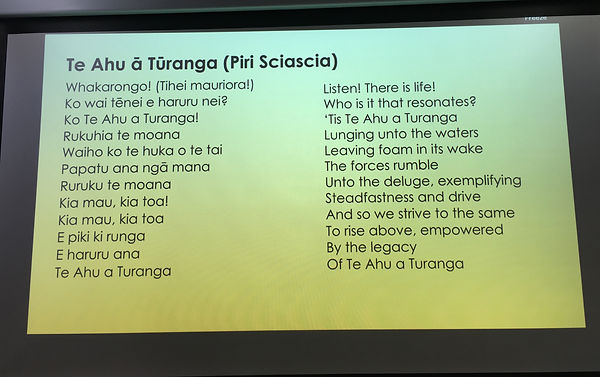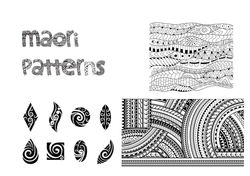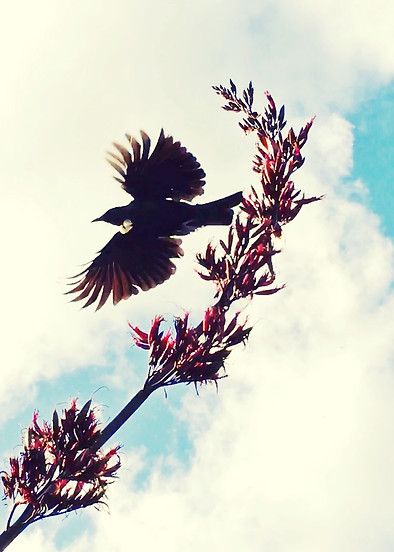

Te Reo Māori
Karakia tīmatanga Opening Karakia
Āio ki te rangi Peace to the sky
Āio ki te whenua Peace to the land
Āio ki ngā mea katoa Peace to everything
Tihei mauri ora! Seize of life!
Pepeha
Tēnā koutou kātoa
I whanau mai ahau ki Aotearoa
Engari, ko Haina te whakapaparanga mai
Ko Papaioea te whenua tupu
Ko Papaioea te kāinga
Engari, I noho au ki Whanganui, ki Te Whanganui-a-Tara, ki Melbourne hoki
Ko Miss Young tāku ingoa
Nō reira tēnā koutou katoa
Hello everyone
I was born in New Zealand
However my ancestors are from China
Palmerston North is where I grew up
Palmerston North is my home
However, I have lived in Whanganui, Wellington and Melbourne
My name is Miss Young
Thank you all
Encouraging Phrases in Te Reo Maori
The cue card I have been using to remind me to encourage ākonga in te reo Māori.

Phrases in Te Reo Maori
Ko wai tō ingoa? What is your name?
No hea koe? Where are you from?
Kei te pēhea koe? How are you?
Āwhina mai: Help this way
Aroha mai: Excuse me
Eight Principles of Aromatawai
Ako Definition:
"Takes responsibility for their own learning and that of Māori learners." (Education Council, 2011).
Principle 1:
Aromatawai emanates from ako (ako is not just reciprocal teaching and learning, many other aspects of Māori principles need to be in place for ako to be a verb rather than a noun - enacted authentically and appropriately).
The Way I Will Implement This Principle In The Classroom:
As a teacher I will need to be responsible for my own learning, to increase my knowledge and show that I am aware of, focused on, and care about the growth of Māori learners. I will implement this by becoming more familiar with the Tātaiako and show a genuine interest in Māori learners. An example of ako in action taken from the Tātaiako is that the learner voice would say "she asks me what we know" (Education Council, 2011).
An Example of How I Implemented Principle 1:
A couple Māori ākonga in the Year 12 Design class wanted further explanation about 'what a vector is' and clarification about what they were doing. I helped them as much as I could in that lesson then went home to do a little research to make sure I was telling them the right thing. I also got clarification myself from my AT about what they were meant to be doing. The next lesson I came back to them with some answers. They were grateful, respectful and they are very talented.
There was another Māori student in the class and when I checked in on him, he was doing so well. The student had read the instructions provided by the AT and was doing a fantastic job at getting stuck into it. I encouraged him using a phrase in te reo Māori, 'kia ū' which means 'give it your best'.
Principle 2:
Aromatawai is focused on learners as learners (rather than learners as results of tests and/or assessments, or learning levels).
The Way I Will Implement This Principle In The Classroom:
As a teacher I need to understand that every learner has a unique story, journey, and way of learning. I will use ako in the way that I "believe [they] can succeed" (Education Council, 2011) academically but at the same time have consideration for ākonga as a person beyond their learning. By asking ākonga questions that are considerate and appropriate but unrelated to their results of tests and/or assessments, or learning levels. And if ākonga do not produce high outcomes I will still continue to show them respect and express ako by having high expectations of ākonga and "[expect] every one of [the learners] to do [their] best all the time" (Education Council, 2011).
An Example of How I Implemented Principle 2:
At Netball on Saturday morning for the past couple of weeks, it has been nice to say 'kia ora' and smile to the whanau who are proudly supporting their girls at Netball. It's really special when ākonga greet me too and are happy to see me at their game. Going to watch the Netball games and chatting to ākonga at School on Monday and during the week about their interests outside of school subjects has been positive to see them light up about their abilities in other areas.


Principle 3:
Aromatawai is focused on teacher competence and confidence.
The Way I Will Implement This Principle In The Classroom:
As a teacher I need to have an understanding of my own identity and the importance and responsibility of my role as a teacher. To be knowledgeable, kind and helpful but also to make sure I set boundaries and am organised in my personal life so I have energy to teach competently and with confidence. I will teach and "show [Māori learners] how to learn" (Education Council, 2011) by learning myself, modelling, and through personal growth in and outside of the classroom. I will also show that I "enjoy learning from [them] too" (Education Council, 2011).
An Example of How I Implemented Principle 3:
For one lesson I taught, in preparation to teach the lesson on 'Trying', I also answered the questions myself, that I later asked the ākonga in class in order to do some self-reflection and positive thinking.
The questions in my 'Trying' Lesson Plan were:
'Think of an event in your life that upset you very much for a while but ultimately stopped bothering you?" quote from Martha Beck
1. What have you learned from that situation?
2. What are some positives that have come from that situation?
Principle 4:
Aromatawai is focused on teacher inclinations and dispositions.
The Way I Will Implement This Principle In The Classroom:
As a teacher I need to make sure I have a fair and consistent approach. I will do my best to be aware of the situations and relationships in the classroom and to respond with fairness and consistency. I will [tell ākonga] that we are both responsible for how well [they] do – we both get to celebrate when [they] do well, or have to try harder if [they] don’t!" (Education Council, 2011).
An Example of How I Implemented Principle 4:
I bumped into an ākonga who is Māori in between classes, she and I have been developing a connection in one of the Year 11 Art classes. In Week 1, she confided in me, sharing that she had some choices to make or she might be suspended from School, she was on a ‘Yellow Card’ to help to keep her on track. I encouraged her and genuinely expressed how she was doing well in the Art Classes. When I saw her in the corridor during Week 2 she said happily that she had been taken off a Yellow Card. I was so happy for her, we hugged in the corridor.
Principle 5:
Aromatawai is authentic.
The Way I Will Implement This Principle In The Classroom:
As a teacher I will be genuine and authentic in my approaches and will "[let the student] and [their] peers know when [they're] doing well" (Education Council, 2011).
An Example of How I Implemented Principle 5:
In my interactions with ākonga, I have been so impressed with how respectful and genuine they are when I reach out to make an authentic connection.
There is an ākonga who is Māori in one of the Year 11 Art classes (different from another Māori ākonga who I have mentioned above in Principle 7), she had been away and was behind in her work but when I had high expectations of her and asked if she wanted to work hard to catch up with the rest of the class she was enthusiastic and did a great job at putting in an honest effort to produce a good result. I was so proud of her, on my last day of Practicum 1A, I wouldn't see that class so I left a note on her papier mache alebrije creature with some encouraging words regarding the effort she put in over the past week or so.
Principle 6:
Aromatawai captures tamaiti, whānau, hapū, community voice.
The Way I Will Implement This Principle In The Classroom:
As a teacher I will be genuinely interested in Māori tikanga and their whānau to develop the learner. I will "[know] what works for [akonga] and [their] learning" (Education Council, 2011).
An Example of How I Implemented Principle 6:
On Practicum 1, the School has what they call a 'Waiata Wednesday' for staff. On the 1st May 2024, the first Wednesday of Practicum 1A, the kaiako at the School who is Māori addressed the morning staff meeting and asked, 'what is it you wish to do?' and 'what kind of waiata do you want?' for Waiata Wednesday's. He suggested that if anyone is interested in learning how to create a pepeha, they could do that. The Māori kaiako shared with the kaiako at the morning staff meeting, if you have a pepeha, they can take it wherever they go and share it where they feel a relationship or would like to build a relationship with that environment. He taught us all to say, 'kia pai tō rā | have a nice day'.
On Wednesday 8 May 2024, Week 2 of Practicum 1A, at a morning Staff Briefing we all learnt the first part of a waiata in Māori – Te Ahu ā Tūranga, this was fun. I remember this waiata from when I was at Primary School.

Principle 7:
Aromatawai captures ākonga potential and talent.
The Way I Will Implement This Principle In The Classroom:
As a teacher I will be attentive to the potential and unique talent of ākonga and think of ways to encourage and assist them in their learning.
An Example of How I Implemented Principle 7:
A popular ākonga in the Year 11 Art class who is Māori who was working on her papier mache alebrije creature was really happy when I came up to her with just the right kind of cardboard she needed to continue with her project. On another occasion, I also used my initiative to get her the wire she wanted to use for her alebrije creature. It was special when she responded so positively about it each time. And when creating a PDF presentation for a lesson I chose images similar to the alebrije creature she was creating in my examples.
Principle 8:
Aromatawai informs planning and targeted assistance.
The Way I Will Implement This Principle In The Classroom:
As a teacher I will increase my knowledge and plan my lessons using knowledge of Effective Pedegogies from the New Zealand Curriculum and the Tātaiako. As I increase in my ability to plan lessons and be better at targeting my assistance to students I will show ākonga with actions I will "never [give] up on them" (Education Council, 2011).
An Example of How I Implemented Principle 8:
It was really encouraging to hear ākonga in classes being vocal when it came to opening and closing the lesson with a karakia.
There is an ākonga who is Māori in my form class and when I asked a group of students about how their week was going she spoke up and said how she might be trouble for getting involved in something she shouldn't have. I empathised with her and said how surprised I was to hear this from her because she is normally such a good student, it resulted in a quiet chat between the two of us and towards the end of form time we just sat there next to each other in silence both hoping that it would work out alright. The next time I saw her at form time we were happy to see each other and she shared with me how the situation worked out for her. She asked me how my weekend was and remembered that I was away for the weekend which is why I couldn't go and watch her netball game like I had the week before. She's awesome.
References:
Education Council. (2011). Tātaiako: Cultural competencies for teachers of Māori learners. Ministry of Education, New Zealand. Crown.
Massey University. (2024). Te Reo Māori, Te Kura o te Mātauranga, 2024: Ngā Aromatawai. [Stream site]. https://stream.massey.ac.nz/course/view.php?id=67563#section-1
Lesson Slides I have used to incorporate Te Reo Māori and Te Ao Māori
 |  |  |  |
|---|---|---|---|
 |
Titiro Whakarongo | Look and Listen
"Titiro whakarongo' which means to look and listen in Māori, a Māori tune Massey Lecturer, Danielle Hodson, used during Wānanga week in February 2024 to get the attention of the class. A few weeks later in class back at the Massey campus, I asked Danielle to sing the words for me while I recorded her so I knew how to pronounce the phrase when getting students to pay attention while on Practicum 1.
I didn't have the confidence to try this tune until the last few days of Practicum 1A, and I am relieved it worked well even though I cannot carry a note! I only used the first part of the tune rather than including the second part where ākonga are meant to respond with the words in tune 'kaua e kōrero' which means 'no talking'. I'm glad I tried it and will continue to use it. Using a tune is a nice way of raising my voice to get students to pay attention. I've used it three times now in three different classes.
Please find Danielle's voice recording below:
Honouring Te Tiriti o Waitangi in Education in Aotearoa
Te Reo Māori Rubric Beginning of 2024 at Massey University
Te Reo Māori Rubric After Practicum 1A 2024

Karakia whakakapi Closing karakia
Kia whakairia te tapu Restrictions are moved aside
Kia wātea ai te ara So that the pathway is clear
Kia turuki whakataha ai So we may move forward
Kia turuki whakataha ai So we may move forward
Haumi ē, hui ē, tāiki ē! Join, group, and affirm!















